
Related
Topics
Guests
- Adam Leith GollnerMontreal-based writer and author of The Fruit Hunters: A Story of Nature, Adventure, Commerce, and Obsession.
We speak with Montreal-based writer Adam Leith Gollner about his new book, The Fruit Hunters: A Story of Nature, Adventure, Commerce, and Obsession. Gollner traveled around the world in search of what he calls the forgotten histories of fruit. Among his discoveries: the “miracle berry,” a cranberry-like fruit that turns sour into sweet, but for questionable reasons — including possible conflicts with corporate interests — has yet to reach American consumers. [includes rush transcript]
Transcript
AMY GOODMAN:
We turn now from the politics of food to the politics of fruit. Montreal-based writer Adam Leith Gollner traveled around the world in search of what he calls the forgotten histories of fruit, whether it’s the bananas readily available in American supermarkets or fruit deemed too dangerous for the FDA to approve. These stories are collected into a new book called The Fruit Hunters: A Story of Nature, Adventure, Commerce, and Obsession.
I recently spoke to Adam Leith Gollner and began by asking him to talk about the geopolitics of fruit.
ADAM LEITH GOLLNER:
One recent story that has been making some news is Indian mangos. They haven’t been available in the United States for years. But as we’ve been hearing with the negotiations over nuclear treaties between India and the United States, the mangos have played an important role in this negotiation. So the American trade representative met with India’s commerce minister, and they were discussing the nuclear deal, and India said, “We will take your nuclear technology, but you must take our mangos.” And they haven’t been allowed in, because there’s the possibility that they may harbor pests. And so, America said, “No, we won’t allow them in,” even though they are supremely delicious and far superior to the mangos that we normally get over here. I mean, you have to taste one, but they’re just unbelievably delicious. And so, the US trade representative came back and said, “Look, they will take our nuclear technology, but we need to take their mangos.” And so, President Bush flew to India and said, “Americans are looking forward to eating Indian mangos.”
AMY GOODMAN:
You say that delicious, lethal, hallucinogenic and medicinal fruits have led nations to war, fueled dictatorships, lured people into new worlds. Talk about fruit leading nations to war.
ADAM LEITH GOLLNER:
Well, there’s this classic example in history of Cato holding up a ripe fig and saying, “This was plucked just days ago in Carthage.” And that was what sent the Punic Wars into — set them into motion.
AMY GOODMAN:
And fueled dictatorships?
ADAM LEITH GOLLNER:
Then we get into the entire story of the United Fruit Company and bananas in Central America.
.
AMY GOODMAN: OK. Let’s go to the United Fruit Company, now Chiquita, which has played a huge role in international politics. I want to play a clip from a 1950 film that was made by the United Fruit Company called Journey to Banana Land.
NARRATOR: It is interesting to know that if it were not for fast transportation, bananas in North America and the rest of the world would be a rare delicacy, a fruit no one could afford to have or to buy.
As workers carry the bunches to the conveyer belt, a man hacks off the end of each bunch with the same kind of knife we saw used on the plantation. Remember? It’s called a machete. The conveyor belt which carries the bananas from the dock to the ship even has canvas pockets to protect the fruit. An inspector watches each bunch as it comes aboard. If he thinks a bunch will ripen too soon, it is taken off and used locally.
Now the ship is about ready to leave. Within twelve hours, ten million bananas have been taken aboard, and the ship is on its way to the United States.
AMY GOODMAN:
Journey to Banana Land, 1950, United Fruit Company film, which later became Chiquita. Adam Gollner, our guest, author of The Fruit Hunters: A Story of Nature, Adventure, Commerce, and Obsession. The significance of this?
ADAM LEITH GOLLNER:
Well, the United Fruit Company was more than just a fruit company. In fact, they were called the Octopus, because of their many-tentacled agglomeration of political clout. They owned the railroads. They controlled the postal service in Central American and Caribbean countries. And in fact, they controlled the entire economies of these countries. As some of us know, they orchestrated the coup in Guatemala in the ’50s, and they also —
AMY GOODMAN:
This is 1954.
ADAM LEITH GOLLNER:
Yes.
AMY GOODMAN:
The overthrow of Arbenz, United Fruit Company integrally involved. And this was a year after Iran, Mohammed Mosaddeq was overthrown by the CIA?
ADAM LEITH GOLLNER:
Absolutely. And we saw some footage of the Great White Fleet, which is what the name of the United Fruit Company’s shipping line was called. And those boats were used in the world wars for moving weapons and soldiers around. The company also funded the Bay of Pigs invasion. And so, they —
AMY GOODMAN:
What do you mean?
ADAM LEITH GOLLNER:
Their money was used in the invasion of Cuba. And so, they have played all sorts of roles that go far beyond just bringing fruits into America.
AMY GOODMAN:
Adam Gollner, what did you bring with you today?
ADAM LEITH GOLLNER:
OK, we’ve got a couple of interesting things here. This is the “miracle fruit.” This is a fruit that has a very unusual property.
AMY GOODMAN:
You’re talking about — it looks almost like a cranberry.
ADAM LEITH GOLLNER:
Yeah, it looks like a cranberry or a little red olive. And this little berry is able to — once you eat it, you kind of bite into it, and this little nectar swishes around your tongue, and for the next hour, everything that is sour that you eat will be transformed into sweet.
AMY GOODMAN:
I’m giving it a try.
ADAM LEITH GOLLNER:
You’ve got to put it in your mouth, and just bite into it and swish it around, and then you can spit out the seed. Take a few seconds to swish it around. And then you are going to try one of these limes, which are sort of sour.
AMY GOODMAN:
And what is this called that I’m eating?
ADAM LEITH GOLLNER:
This is called the “miracle berry.”
AMY GOODMAN:
Where was it grown?
ADAM LEITH GOLLNER:
It initially comes from —
AMY GOODMAN:
I think I should have asked that before I ate it, but —
ADAM LEITH GOLLNER:
No, this comes from Florida. And the berry itself is not too — it’s kind of nondescript. But what happens is, subsequently, you’ll notice that this lime will taste very sweet. It comes from Florida, these berries, but initially it comes from West Africa.
AMY GOODMAN:
The lime tastes very sweet.
ADAM LEITH GOLLNER:
Sensationally sweet.
AMY GOODMAN:
Yes.
ADAM LEITH GOLLNER:
Ecstatically sweet.
AMY GOODMAN:
It’s like I’m eating an extremely sweet orange.
ADAM LEITH GOLLNER:
Yeah.
AMY GOODMAN:
But it’s a lime.
ADAM LEITH GOLLNER:
Yeah. It’s the sweetest, most delicious lime you’ve ever tasted, I imagine.
AMY GOODMAN:
And so, why don’t we know more about the miracle berry?
ADAM LEITH GOLLNER:
This miracle berry was banned by the FDA in the early 1970s. Some —
AMY GOODMAN:
I’m eating something that was banned by the FDA?
ADAM LEITH GOLLNER:
Well, you’re about to find out —- you’re about to hear the story. In the ’60s and the ’70s, an entrepreneur named Robert Harvey managed to raise tens of millions of dollars to create an all-natural alternative to sugar using the miracle fruit, and he managed to synthesize the active ingredient in this berry, which is a protein called “miraculin.” So, what’s happening to you right now is you have miraculin on your taste buds, and that means that when sour foods come into contact with the sweetness receptors on your taste buds, it sends this very powerful sweetness signal to your brain, even though there’s only sour coming into your mouth. And so -—
AMY GOODMAN:
I mean, it’s just unbelievable.
ADAM LEITH GOLLNER:
Yeah.
AMY GOODMAN:
It’s sweeter than an orange.
ADAM LEITH GOLLNER:
It’s amazing. And this entrepreneur —
AMY GOODMAN:
Did you bring more limes? Because I like it.
ADAM LEITH GOLLNER:
Keep on eating them. I know, I know. It’s really delicious.
AMY GOODMAN:
Of course, I love limes, too, when they’re sour, but these are very sweet. So, why was it banned?
ADAM LEITH GOLLNER:
OK, so here is what happened. He started making miracle fruit tablets, because these fruits don’t have a very long shelf life, and that’s another reason that many of these fruits from the tropics don’t make it here, is that they just have no shelf life whatsoever. But he put them in tablet form. Diabetics were going crazy for them. Kids were choosing miracle fruit popsicles over regular popsicles by this enormous margin. And companies, other corporations started getting interested. And Harvey was turning down offers in the billions for control — billions of dollars were being offered to him for this, because it looked like it was poised to become an all-natural alternative to sugar. And even the artificial sweetening industry was very concerned about this threat of this small red berry.
But what happened was, that just as it was about to launch, Harvey’s company, his office was raided by industrial spies. His files were stolen. He got into high-speed car chases in the middle of the night. People were following him.
AMY GOODMAN:
Who is this guy?
ADAM LEITH GOLLNER:
He was the entrepreneur that brought miraculin to the market in 1960s and ’70s. And then it got banned just as it was about to launch. And he got a letter in 1974 from the FDA saying the miracle berry — miracle berry products are not allowed into the market in any form whatsoever. And so, he had to shut down the entire operation.
AMY GOODMAN:
And that’s been the end of it since?
ADAM LEITH GOLLNER:
Well, no. Now, this is coming back, because some growers in Florida have figured out that they can actually ships these berries overnight to consumers. So with the rise of overnight shipping, the miracle fruit has had a kind of second coming, and people are able to taste it once again.
AMY GOODMAN:
But it’s still banned by the FDA.
ADAM LEITH GOLLNER:
I called the FDA several dozen times and had a very hard time getting anybody to be able to speak about it. But what I did learn was that it is considered a food additive, and it is not allowed to be used as a food additive. Now, the fresh berry itself is different. So they said the berry can be used, and that’s the USDA’s department. But the USDA doesn’t even know it exists. So it is in a kind of regulatory limbo.
AMY GOODMAN:
So where do you get these miracle berries?
ADAM LEITH GOLLNER:
Miraclefruitman.com will ship them to you. That’s the only place you can get them.
AMY GOODMAN:
And how long will this lime taste as sweet as it’s tasting right now?
ADAM LEITH GOLLNER:
Hopefully not the rest of your life.
AMY GOODMAN:
I’m on my second wedge.
ADAM LEITH GOLLNER:
Yeah. It will last for about an hour.
AMY GOODMAN:
And then what happens?
ADAM LEITH GOLLNER:
And then it’ll just wear off.
AMY GOODMAN:
Are these sold in any store in the United States?
ADAM LEITH GOLLNER:
No, but they may start being sold. We’ll see. I mean, this is an example of how things change. And as awareness is raised for these amazing fruits that we don’t even realize exist, people start demanding them, and demand will increase supply.
AMY GOODMAN:
Is it metabolized as glucose?
ADAM LEITH GOLLNER:
No, not at all. Not at all.
AMY GOODMAN:
So, for diabetics, it’s fine.
ADAM LEITH GOLLNER:
It’s totally good. It’s good for people who are undergoing chemotherapy treatment, because for them, all food tastes metallic and rubbery. But when you take a miracle berry, it actually allows you to taste the foods again. It’s just a wonderful thing.
AMY GOODMAN:
Can you talk about how, OK, this miracle berry has not been approved, but aspartame has? Explain the story of aspartame and our former secretary of defense, Donald Rumsfeld.
ADAM LEITH GOLLNER:
Yes, Donald Rumsfeld was the head of a corporation called Searle, and he spent many years approving the — or working on the legalization process for aspartame. And the head of the FDA that came in briefly, just for a moment, just long enough to approve aspartame, immediately left subsequently. He came under fire for accepting corporate donations and corporate gifts. Nobody was surprised, seeing as he immediately went to Searle’s public relations firm as soon as he left the FDA.
AMY GOODMAN:
That is Adam Leith Gollner, author of The Fruit Hunters: A Story of Nature, Adventure, Commerce, and Obsession.

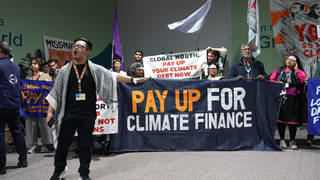
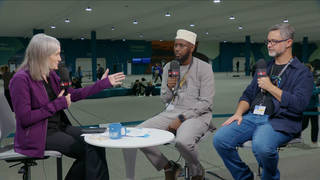
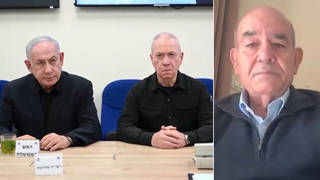
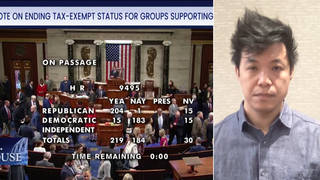
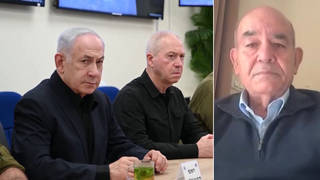






Media Options